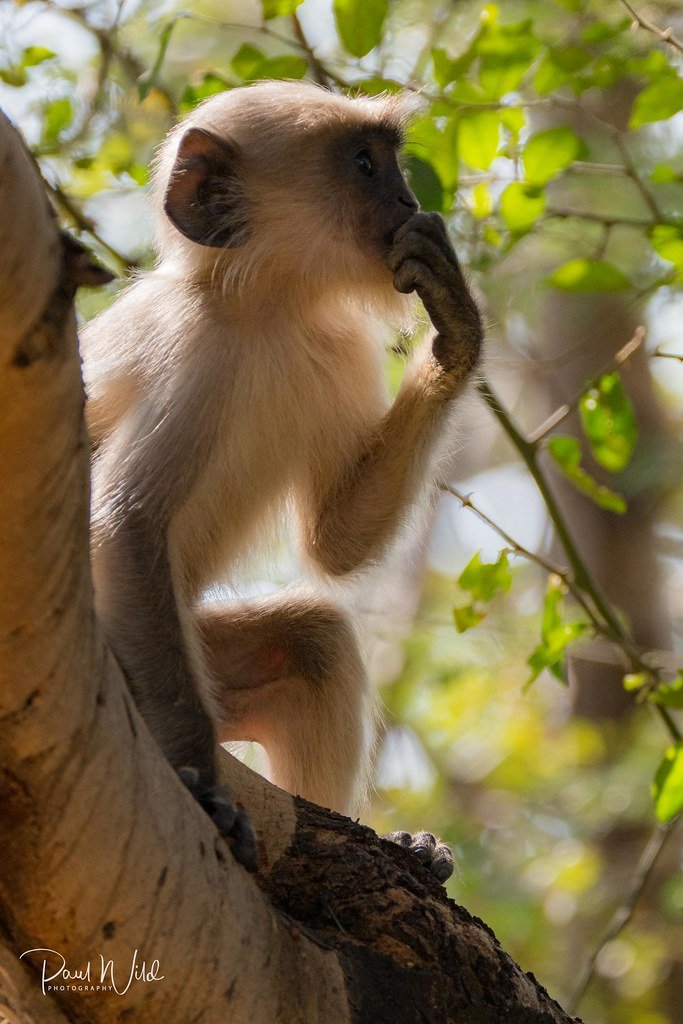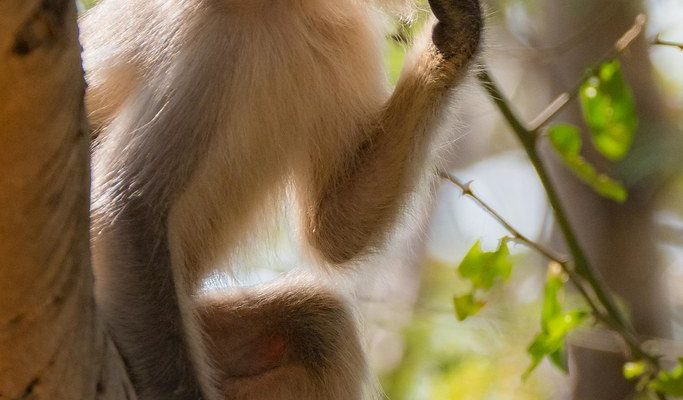
Langurs, known for their long tails and agile movements, belong to a group of monkeys found mainly in Asia. They’ve got a unique way of interacting with their environment, other animals, and even with us humans. To understand their intelligence, think of it this way: they’re like the clever kids in class who can think on their feet. From problem-solving to social dynamics, langurs exhibit behaviors that highlight a rich mental life. So, let’s dive in and unravel the mysteries behind their smart ways.
Understanding Langur Intelligence
When we talk about intelligence in animals, it can look very different from what we see in humans. For langurs, their smarts come out in various ways, from social interactions to innovative problem-solving.
Social Intelligence
Langurs are highly social creatures. Living in groups called troops, they develop complex relationships. This social structure requires a level of communication and understanding that’s impressive. They often engage in grooming rituals, which aren’t just for cleanliness; they help strengthen bonds and establish hierarchies within the troop. You might notice that the higher-ranking langurs tend to get groomed more often, which helps maintain peace and order among the group.
Problem-Solving Skills
Langurs have been observed using tools, which is a sign of advanced cognitive abilities. For instance, they might use sticks to poke at insects or break open hard fruits. This tool use is similar to what we see in other intelligent species like crows and chimpanzees. When faced with a challenge, such as reaching food that’s out of grasp, langurs can assess their environment and come up with a clever solution, showcasing their innovative thinking.
Learning and Adaptability
You might be wondering how langurs learn and adapt to different environments. Their ability to observe and mimic is crucial for survival and thriving in various habitats.
Imitation and Learning
Langurs are great imitators. Young langurs often learn about food sources and social behavior by watching older troop members. This learning is essential, especially in changing environments where survival skills are necessary. Imagine a child learning to tie their shoes just by watching someone do it—langurs operate in a similar way, picking up crucial survival skills from their peers.
Adaptability to Environment
These monkeys are also known for their adaptability. Whether they’re in dense forests or urban areas, langurs can adjust their behavior based on what’s available. For example, in cities, they’ve learned to scavenge for food, showcasing their resourcefulness. This adaptability not only helps them survive but also highlights their intelligent decision-making skills in unfamiliar situations.
Communication Styles
Langurs have a fascinating way of communicating, and it plays a significant role in their social structure and group dynamics.
Vocalizations
These primates are not shy about making noise. Langurs use a variety of vocalizations to communicate with each other, from alarm calls to social interactions. Their barks and howls serve different purposes, such as warning others of nearby predators or signaling readiness for mating. Each sound can convey complex information, showcasing their understanding of social cues.
Body Language
Besides vocal sounds, langurs rely heavily on body language. They use facial expressions and gestures to express emotions and intentions. For instance, a langur might show submission by lowering its body posture or baring its teeth as a warning signal. Understanding these non-verbal cues is crucial for maintaining harmony within the troop.
Sociability and Group Dynamics
Langurs are an excellent example of how intelligence plays a role in social structures.
Hierarchical Structures
Every langur troop has a clear hierarchy. The dominant males usually have priority access to food and mates, while the lower-ranking individuals must follow the social norms of the group. This hierarchy isn’t just a power game; it’s about ensuring stability and minimal conflict. Understanding this dynamic is vital for the troop’s success and longevity.
Cooperative Behaviors
You’d be surprised at how cooperative these monkeys can be. Langurs often engage in joint activities such as grooming and playing, which helps strengthen their social bonds. In times of danger, they may work together to fend off predators, displaying a level of strategic planning that showcases their intelligence. The ability to work as a team is often a marker of a highly intelligent species.
Examples of Intelligence in Action
To really grasp how smart langurs are, let’s look at a few real-life examples that highlight their abilities.
Finding Food
In one study, researchers observed langurs figuring out how to open a box that contained food. They took turns trying different approaches until they found a successful method. This kind of trial-and-error learning is indicative of problem-solving intelligence.
Social Interactions
In urban settings, langurs have been seen interacting with humans, sometimes even stealing food from unsuspecting picnics. This behavior shows their adaptability and cleverness in navigating human environments. By learning from human behaviors, they can thrive in both natural and urban habitats.
Conservation and Human Interaction
As much as we admire langurs, their intelligence can sometimes put them at odds with humans, leading to conflicts that affect their populations.
Human-Wildlife Conflict
As urban areas expand, langurs are increasingly coming into contact with humans. While their intelligence allows them to adapt, it can also lead to misunderstandings. Sometimes, they raid crops or cause damage while searching for food. Understanding their behavior can help in creating strategies to coexist peacefully.
Conservation Efforts
Conservation efforts are essential to ensure these intelligent creatures thrive in their natural environments. Education about their cognitive abilities can foster respect and understanding, helping people appreciate the need to protect langurs and their habitats. Dialogue between conservationists and local communities can lead to solutions that benefit both humans and wildlife.
Langurs are more than just charming monkeys. Their cognitive abilities, social structures, and adaptability highlight the complexity of their intelligence. From problem-solving to social hierarchies, these primates remind us that intelligence comes in many forms.
By understanding and appreciating their intelligence, we can learn to coexist more harmoniously with these fascinating creatures and protect their future. The next time you see a langur swinging through the trees, take a moment to think about the smart little strategies they may be employing to thrive in their world.

